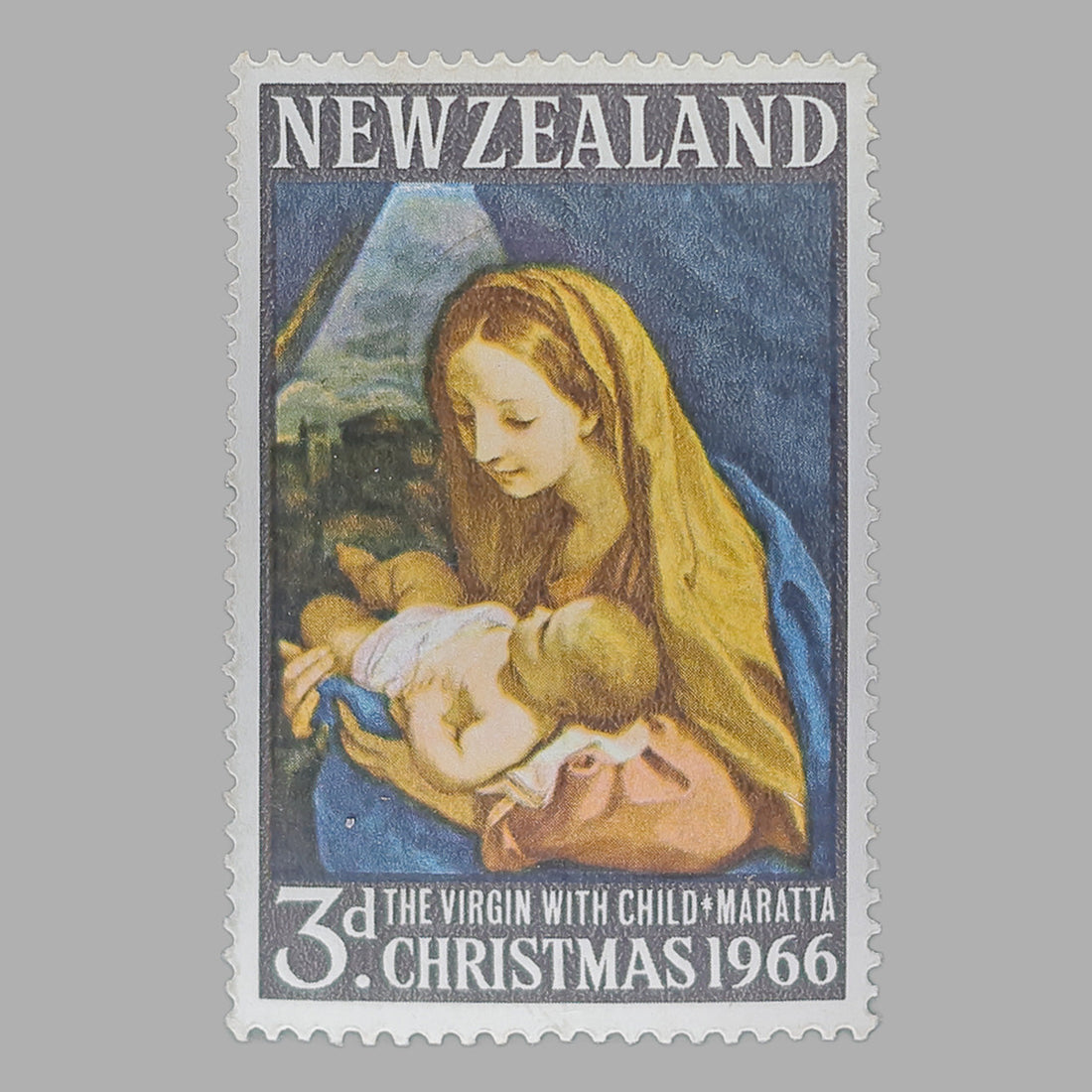
Vintage Spotlight: The 1966 New Zealand Christmas Stamp
Share
A timeless fusion of postal history and Baroque art
📬 Introduction
Stamps are more than postage — they are miniature works of art that tell stories about culture, history, and human creativity. Today, we’re spotlighting a special piece from 1966: the New Zealand Christmas stamp featuring The Virgin with Child, after the celebrated Italian Baroque painter Carlo Maratta.
📍 Historical Context of the 1966 Stamp
New Zealand began issuing Christmas-themed stamps in 1960, making the 1966 release part of its early tradition of festive postal art. The stamp was valued at 3d (three pence), part of the country’s pre-decimal currency system, which remained in use until 1967.
For everyday senders, this small piece of paper was simply postage. For collectors and historians today, it stands as a tangible connection to mid‑20th‑century New Zealand, a nation blending tradition with modernisation in its postal service.
🎨 The Artwork: Carlo Maratta’s The Virgin with Child
The design reproduces The Virgin with Child, a work by Carlo Maratta (1625–1713), one of Italy’s most prominent Baroque painters. Known for his serene and graceful depictions of religious figures, Maratta’s art aimed to inspire devotion while celebrating classical beauty.
This adaptation for New Zealand’s Christmas issue brought European Baroque elegance to the South Pacific, offering a blend of faith, culture, and fine art in a format accessible to all.
💰 Understanding “3d” — The Pre‑Decimal Currency
The “3d” inscription on the stamp indicates its value: three pence.
- “d” stands for denarius, the Latin term historically used for pence in the British system.
- New Zealand used this pre‑decimal system until July 1967, when the nation adopted dollars and cents.
For collectors, the “3d” is more than a number — it’s a marker of an economic and cultural era that no longer exists.
🖼️ Why This Stamp Matters to Collectors
The 1966 Christmas stamp is valued not only for its aesthetic appeal but also for:
- Artistic heritage: Showcasing the work of a globally renowned Baroque painter.
- Historical timing: Issued just before New Zealand’s switch to decimal currency.
- Collectible rarity: Part of the early series of New Zealand Christmas stamps, which remain popular among philatelists.
Whether framed in an album or captured through photography, this stamp continues to fascinate enthusiasts around the world.
📸 Stamp Photography: Preserving Miniature Art
In today’s digital world, stamp photography offers a unique way to preserve and share the intricate details of these historic treasures. High‑resolution images allow us to appreciate the fine lines, colours, and textures that might otherwise fade with time.
Through photography, stamps become more than collectibles — they transform into visual archives of cultural heritage.
At Page to Thread (latistudio.store), our mission is to celebrate creativity and history through visual storytelling. While we don’t sell stamps, we share their beauty alongside other artistic projects, from wall art to custom print designs.
📌 Conclusion
The 1966 New Zealand Christmas stamp stands as a perfect example of how art, history, and everyday life intersect in something as small as a postage stamp. Through photography and storytelling, we can continue to preserve and share its legacy.
